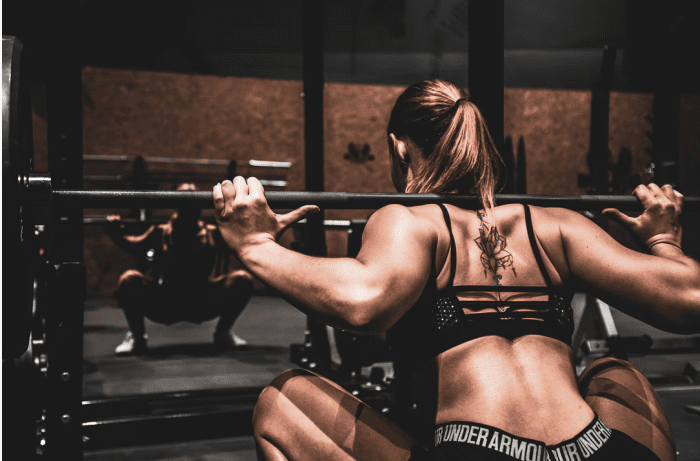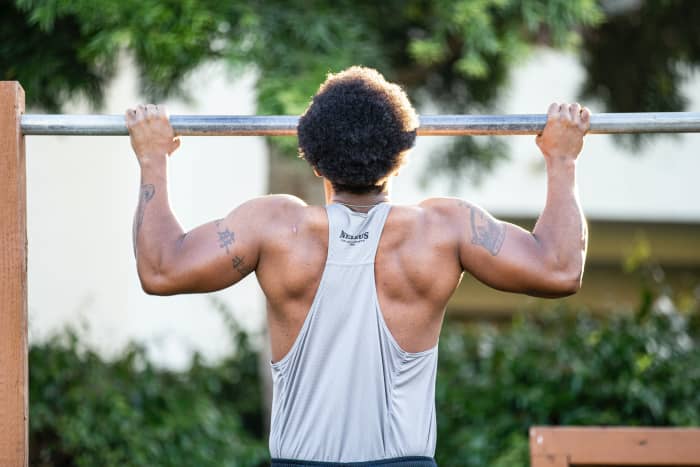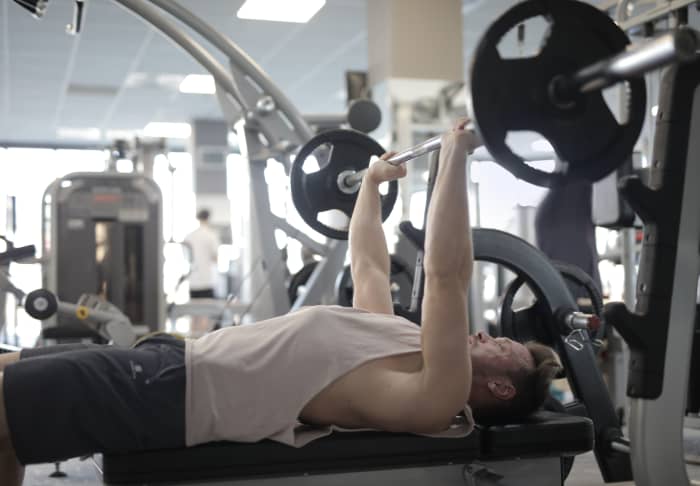
7 compound exercises to get your whole body engaged
Building muscle mass and strength requires consistency, effort, and a good diet. One of the most important factors that determine how fast you build muscle is exercise selection. Not all exercises are created equal. Some exercises work smaller muscle groups that have less potential for growth. Compound exercises should be your main focus if your primary goal is to become more muscular, stronger, and athletic.
A compound exercise, or multi-joint exercise, works multiple muscle groups at the same time. A primary muscle is activated when performing a compound exercise while secondary muscles assist to lift the weight through the range-of-motion. Some muscles act as dynamic stabilizers to balance a weight or your body. Improving your strength with compound exercises can help you in real world activities like sports or moving furniture. They may also help you save time at your commercial gym or home gym.
Isolation exercises are single-joint movements that target one specific muscle. They are good for bringing up lagging muscle groups. Completely isolating a muscle is not possible, but an isolation exercise will place more emphasis on a single muscle when compared to a compound exercise. For example, lying leg curls are very effective for targeting the hamstrings, although, the calves and glutes are activated to a small extent.
7 Functional Compound Exercises
Here are seven of the best functional compound exercises to start working into your routine.
1. Barbell Squats
One of the best exercises for the lower body is the barbell back squat. It primarily targets the glutes, quadriceps, and hamstrings. The lower back and core are involved in helping stabilize the weight. Squatting is one of the most common activities humans do every day, whether we are sitting down on a chair or on a toilet. Increasing your barbell squat can help improve explosive athletic movements like running, jumping, or lifting heavy objects off the ground.
It’s vital to utilize excellent form and technique when performing a barbell squat. Using too much momentum or lifting beyond your capabilities can lead to injuries. Additionally, use a good range of motion. Ideally, you should be squatting to parallel or lower. Use a foot stance that allows you to hit proper depth.
Increasing weight with the barbell squat will help create more muscular thighs and glutes. Before going heavier, practice the barbell squat with a light weight to improve technique, flexibility, and mobility.

Pull-ups
2. Pull-Ups
Want to get a wider back and stronger biceps? Pull-ups are a compound exercise for the upper back, rhomboids, lats, and biceps. They also work the forearms and grip strength to some extent. Improving your pull-up strength will help you appear wider from the back or front.
Taking an underhand grip is called a chin-up, a variation of the pull-up that targets the biceps more. An underhand grip is when your hands are in a supinated position (palms facing you). A normal pull-up is when your hands are in pronation (palms facing away). Chin-ups are usually easier for beginners because the biceps assist more.
If pull-ups are too difficult for you, try lat-pulldowns first. They target the same muscles, but are easier because they don’t involve your body weight. Losing excess body fat will make pull-ups easier as well. For those looking for a challenge, try weighted pull-ups or chin-ups, as they can make your lats and biceps even bigger.
Always use good range of motion when performing pull-ups. Your results will be poor if you’re not lowering yourself down or pulling yourself up high enough.

Barbell bench press
3. Barbell Bench Press
One of the most popular exercises in the world is the barbell bench press. Almost every gym-goer has done a bench press at one point in their lives. Unfortunately, not everyone does the compound exercise correctly.
The barbell bench press targets the pectorals, triceps, and anterior deltoids. While the bench press is often regarded as an excellent chest builder, the triceps can be developed significantly, especially when utilizing a narrow grip and fully extending each repetition. The shoulders (anterior deltoids) help assist in lifting the barbell.
The barbell should be lowered under control without flaring the elbows. Lifting the barbell with a lot of momentum can cause serious injury. Pausing the barbell on the chest is an effective way to control the weight while increasing strength at the bottom.
If possible, use a spotter when bench pressing for safety. If you’re alone, never put weight clamps on the barbell and avoid training the muscles to complete failure. Getting stuck under a barbell is a predicament you’ll want to avoid. Pay attention, respect the weight, and follow proper safety protocols. Trying to show off by lifting a weight you can’t handle is a recipe for disaster. Set your ego aside.
Deadlifts
4. Deadlifts
The deadlift is the ultimate posterior chain movement! It primarily works the lower back, glutes, hamstrings, traps, and forearms. Both the conventional and sumo deadlift can be effective in your training routine, but the sumo works the quadriceps a bit more. The conventional deadlift is a relatively narrow stance, while the sumo is much wider.
Avoid rounding your lower back when lifting or bouncing the weight off the floor, as that can harm the spine. If you’re utilizing a mixed grip, keep the arms straight to avoid a potential bicep tear. Otherwise, use an overhand grip with chalk or use straps.
Deadlifting can place a lot of strain on your central nervous system and energy levels. It might be a good idea to try Romanian deadlifts as a temporary alternative. Romanian deadlifts place more emphasis on the hamstrings. They start from the standing position.
5. Overhead Press
The overhead press is a compound exercise that targets the shoulder muscles, triceps, and core. It’s performed with a barbell while standing, but dumbbells can be used for a variation. The key to building boulder shoulders with the overhead press is utilizing proper technique while applying progress overload.
The barbell is lifted over your head until you fully extend at the top. Make sure your head goes forward after pressing the weight overhead, then move it back after lowering the weight during the negative portion. Don’t use leg drive, as that takes the pressure off the anterior deltoids and becomes a push press. Leaning back too much will place too much stress on the spine and potentially make the shoulders work less.
Ideally, the barbell should be lowered underneath the chin to gain maximum hypertrophy, strength, and flexibility. Some people try to cheat by using half-reps, leg drive, or they lean back so far that it becomes an incline press.
6. Parallel Dips
Dips are a calisthenic exercise where your body serves as the main resistance, albeit, weight can be added. Parallel dips develop the chest and triceps, and work the shoulders. A lot of free-standing pull-up bars have parallel dips.
Lift your legs and cross them before lowering yourself on a parallel dip station. While range-of-motion is important on dips, going too low may cause shoulder issues for some people. Stopping when your arms are parallel with the floor should be sufficient. Maintain good posture by keeping your chest up and your head forward. Don’t dip too fast. Otherwise, the exercise becomes less effective, resulting in less muscle mass and strength gains.
Barbell
Photo by Eduardo Cano Photo Co. on Unsplash
7. Barbell Rows
Looking to build more muscle by thickening up the back? Barbell rows are a horizontal pull that works the rhomboids, lats, traps, and posterior deltoids. Using an overhand grip can help develop your forearms and increase grip strength.
Your upper body should be at a 30 to 40-degree angle while maintaining a neutral spine. Pull the weight toward your sternum under control. Your knees should be bent a little bit. Some people turn the barbell row into a deadlift by utilizing way too much lower back. The goal is to target the upper back muscles in this compound exercise.
This content is accurate and true to the best of the author’s knowledge and is not meant to substitute for formal and individualized advice from a qualified professional.
© 2022 David Patrick


